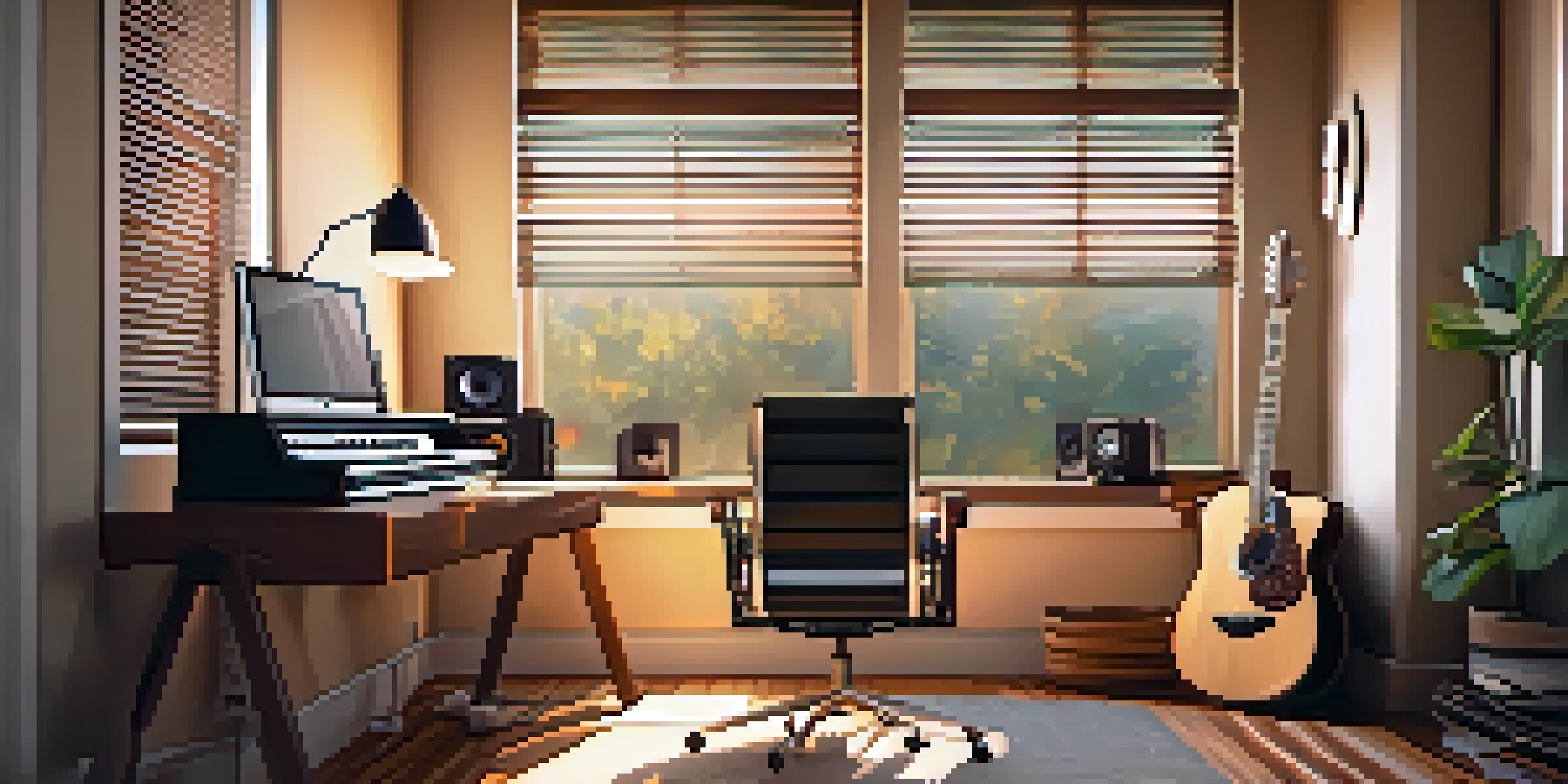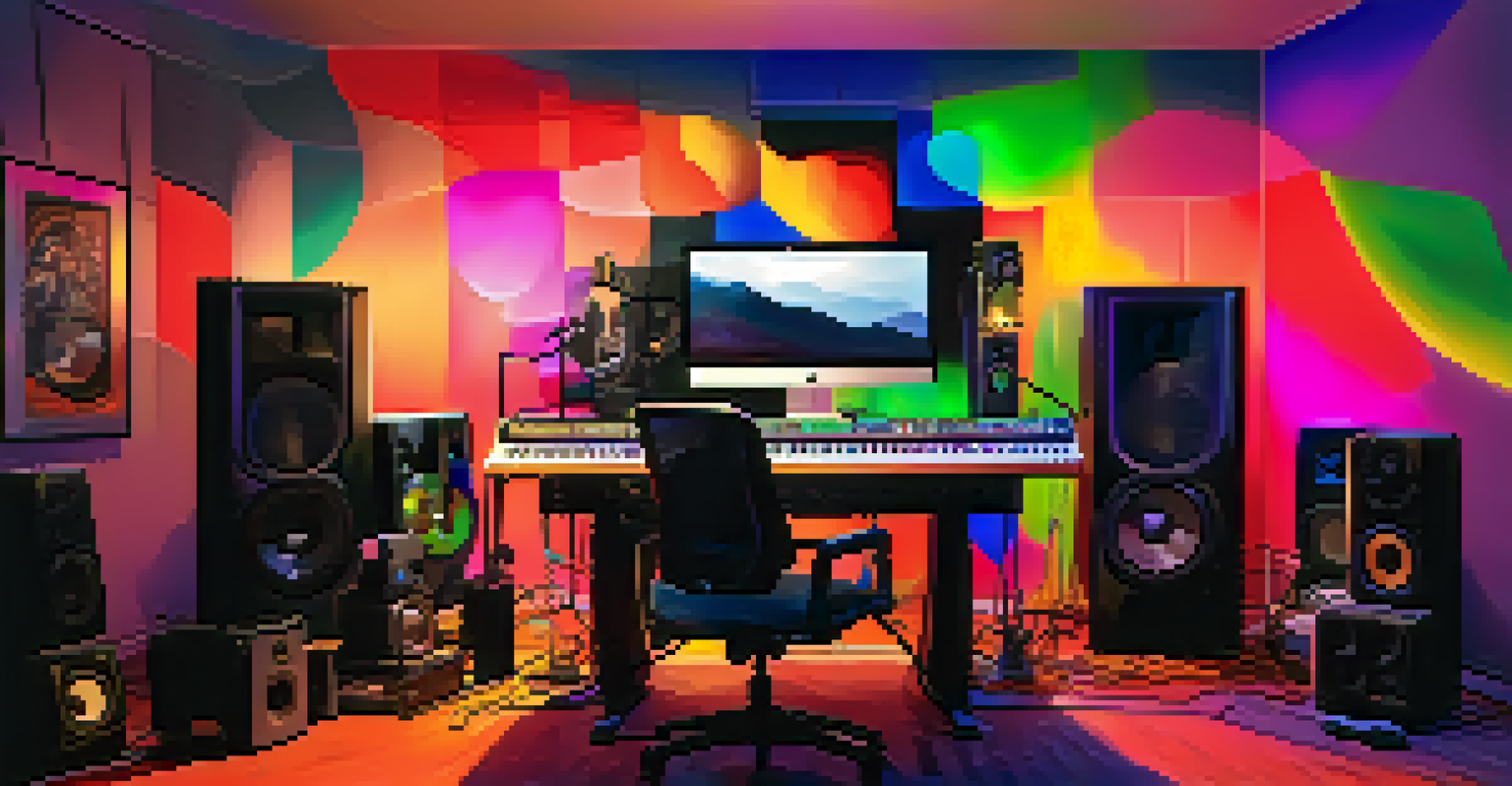Building a Home Studio: Guitar Recording Setup Essentials

Understanding Your Home Studio Needs
Before diving into the gear, it's crucial to assess what you need your home studio for. Are you recording demos, full tracks, or just practicing? Understanding your goals helps in selecting the right equipment and setting it up efficiently.
Music is the shorthand of emotion.
Think about the space you have available. A small room may require different acoustic treatment than a larger space. Evaluating your environment can prevent future headaches and enhance your recording quality.
Ultimately, knowing your specific needs will guide your choices and ensure you invest in the right gear that will serve you well in the long run.
Choosing the Right Audio Interface
An audio interface is the heart of your home studio, acting as the bridge between your guitar and your computer. It converts the analog signals from your guitar into digital data that your recording software can understand.

When selecting an audio interface, look for models with high-quality preamps and low latency. This ensures you capture your sound accurately without delays that can disrupt your creativity.
Assess Your Studio Needs First
Understanding your specific recording goals and available space is essential for selecting the right equipment.
Brands like Focusrite and PreSonus offer great options for beginners and pros alike. Investing in a reliable audio interface will set the tone for all your recordings.
Investing in Quality Microphones
Microphones play a critical role in capturing the nuances of your guitar sound. For electric guitars, a dynamic microphone is often preferred, while acoustic guitars may benefit from a condenser mic, which captures more detail.
The more you know, the more you realize you don't know.
Consider starting with a versatile microphone that can handle both types. A good quality mic can elevate your recordings significantly, allowing the rich tones of your guitar to shine through.
Popular choices include the Shure SM57 for electric guitar and the Audio-Technica AT2020 for acoustic. These options are budget-friendly yet deliver professional results.
Setting Up Your Digital Audio Workstation (DAW)
Your DAW is where the magic happens, allowing you to record, edit, and mix your guitar tracks. There are various options available, from beginner-friendly software like GarageBand to more advanced programs like Ableton Live.
Choosing a DAW ultimately depends on your workflow and personal preference. Some DAWs offer extensive features for editing and effects, while others focus on simplicity.
Invest in Quality Gear
Choosing a reliable audio interface and high-quality microphones can significantly enhance your recording quality.
Take advantage of free trials to find the software that feels right for you. A great DAW can enhance your recording experience and make the process enjoyable.
Essential Accessories for a Smooth Setup
Beyond the core equipment, there are several accessories that can improve your home studio setup. For instance, a good pair of studio monitors or headphones is essential for accurate sound monitoring.
Additionally, consider investing in a microphone stand, pop filter, and quality cables. These small items can make a big difference in convenience and sound quality.
Don't overlook acoustic treatment as well. Simple foam panels or bass traps can help manage sound reflections, making your recordings clearer and more professional.
Exploring Virtual Instruments and Plugins
In today's music production landscape, virtual instruments and plugins can expand your sonic palette. They allow you to incorporate a wide range of sounds without needing physical instruments.
Many DAWs come with built-in plugins, but you can also explore third-party options for greater versatility. From amp simulators to effects processors, these tools can enhance your guitar recordings significantly.
Optimize Your Recording Environment
Creating a comfortable and acoustically treated space is crucial for achieving clear and professional recordings.
Experimenting with different plugins can inspire creativity and lead to unique sounds, so don’t hesitate to explore what’s available.
Optimizing Your Recording Environment
Creating the right atmosphere can do wonders for your creativity. Ensure your recording space is comfortable, organized, and free from distractions.
Consider the acoustics of your space—adding rugs, curtains, or wall treatments can help absorb sound and reduce unwanted echoes. A well-prepared environment can make a substantial difference in recording quality.

Finally, remember to keep your gear accessible and arranged logically. This will streamline your workflow and help you stay focused on your music.
Continuous Learning and Experimentation
Building a home studio is just the beginning; continuous learning is key. Explore online tutorials, join forums, or even take classes to enhance your skills.
Experimentation is also crucial. Don't be afraid to try new recording techniques, effects, or genres. Each session can teach you something valuable about your sound and production style.
Stay curious and open-minded—this journey can be as rewarding as the music you create. Enjoy the process and watch your skills and creativity flourish!